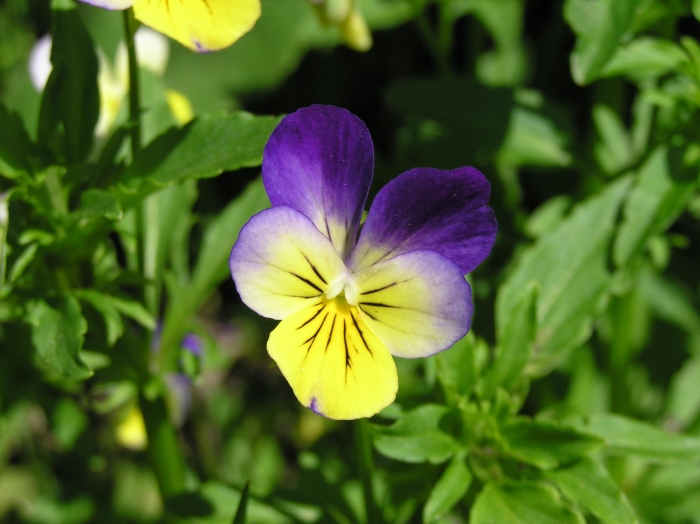Heartsease
(Viola tricolor)
Heartsease (Viola tricolor)
/
/

Tom.kassumed assumed
CC BY-SA 2.5























































Estimated Native Range
Summary
Heartsease is valued for its delightful flowers and is used in garden borders, rockeries, and as a ground cover. It is also popular for naturalistic plantings and wildflower gardens. The plant is easy to grow and maintain, thriving in full sun to part shade. It prefers well-drained soils but is adaptable to various moisture levels and drainage conditions. While it is not known for major diseases or pests, it can self-seed prolifically and may become invasive outside its native range. Gardeners should be cautious and check local regulations before planting Heartsease in areas where it is not native.CC BY-SA 4.0
Plant Description
- Plant Type: Herb
- Height: 0.5-1 feet
- Width: 0.5-1 feet
- Growth Rate: Moderate
- Flower Color: Yellow, Purple, White
- Flowering Season: Spring, Summer
- Leaf Retention: Deciduous
Growth Requirements
- Sun: Full Sun, Part Shade
- Water: Medium
- Drainage: Slow, Medium, Fast
Common Uses
Bank Stabilization, Bee Garden, Border Plant, Butterfly Garden, Deer Resistant, Edible*Disclaimer: Easyscape's listed plant edibility is for informational use. Always verify the safety and proper identification of any plant before consumption., Fragrant, Groundcover, Potted Plant, Rock Garden, Salt Tolerant, Showy Flowers, Street Planting, Water Garden
Natural Habitat
Native to meadows, grasslands, forest clearings, and other open habitats across Europe and Asia
Other Names
Common Names: Wild Pansy, Johnny-Jump-Up, Field Pansy, Heart’s-Ease, Johnny Jumpup, Pansy, Miniature Pansy, Love-In-Idleness, European Wild Pansy, Ladies’-Delight
Scientific Names: , Viola tricolor, Viola bicolor, Viola calcarata, Viola vivariensis, Viola ruralis, Viola sabulosa, Viola sagotii, Viola meduanensis, Viola paillouxi
GBIF Accepted Name: Viola tricolor L.